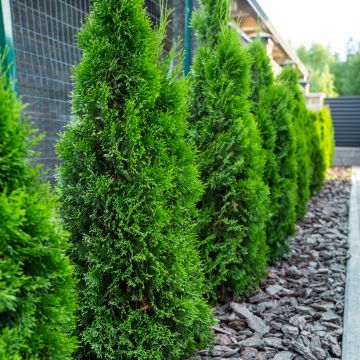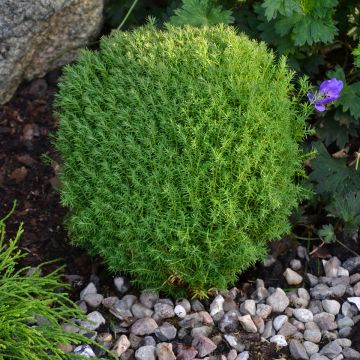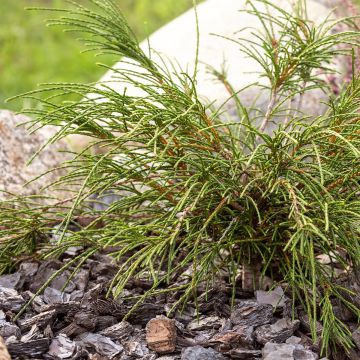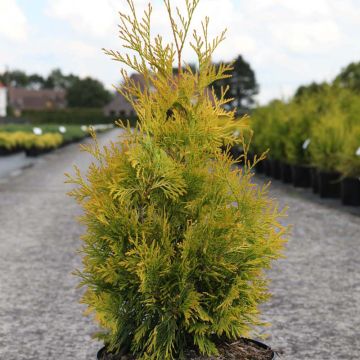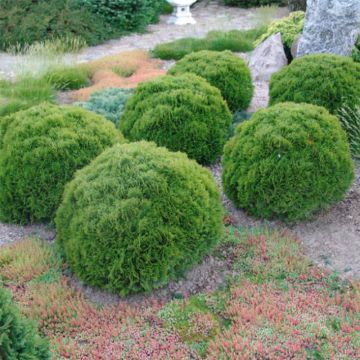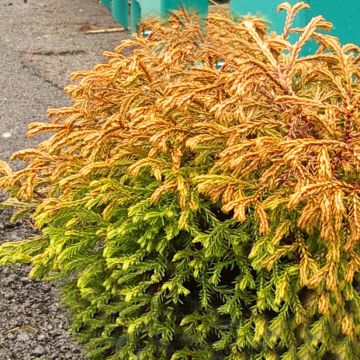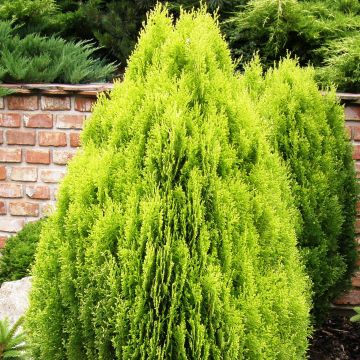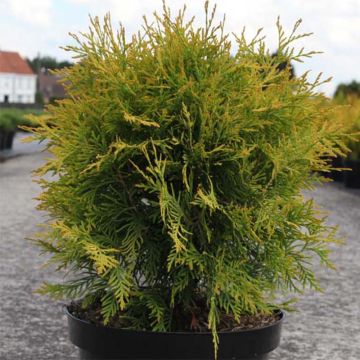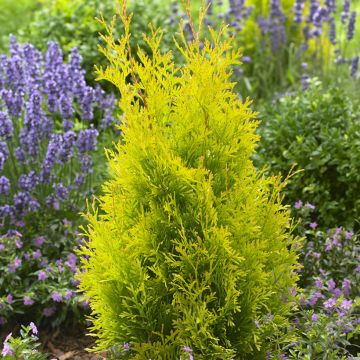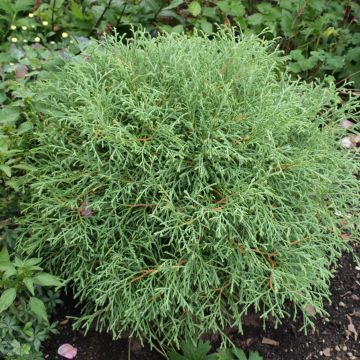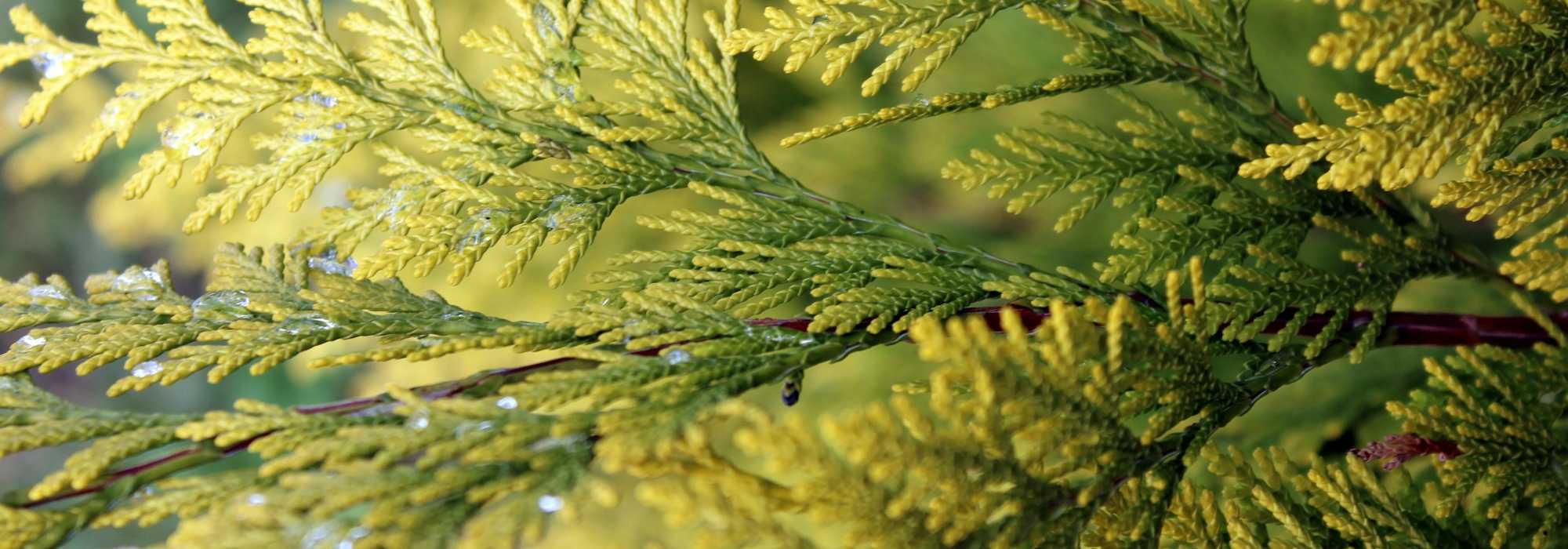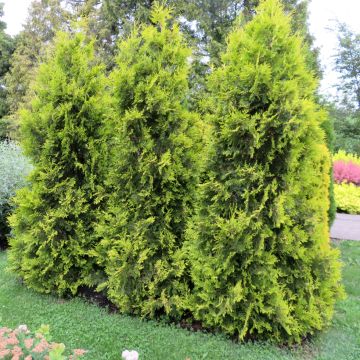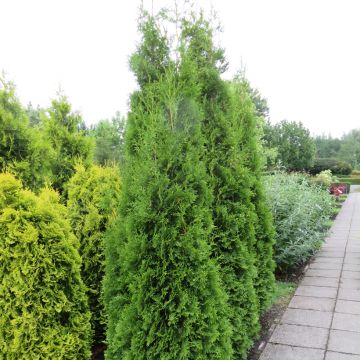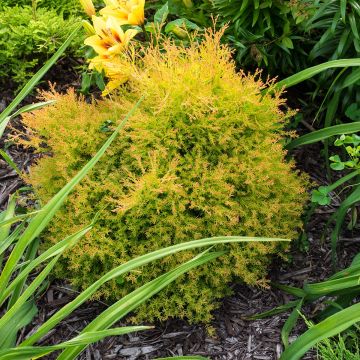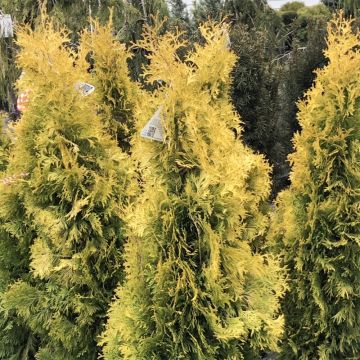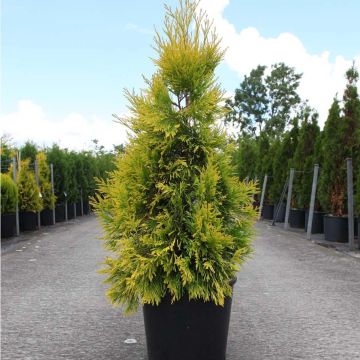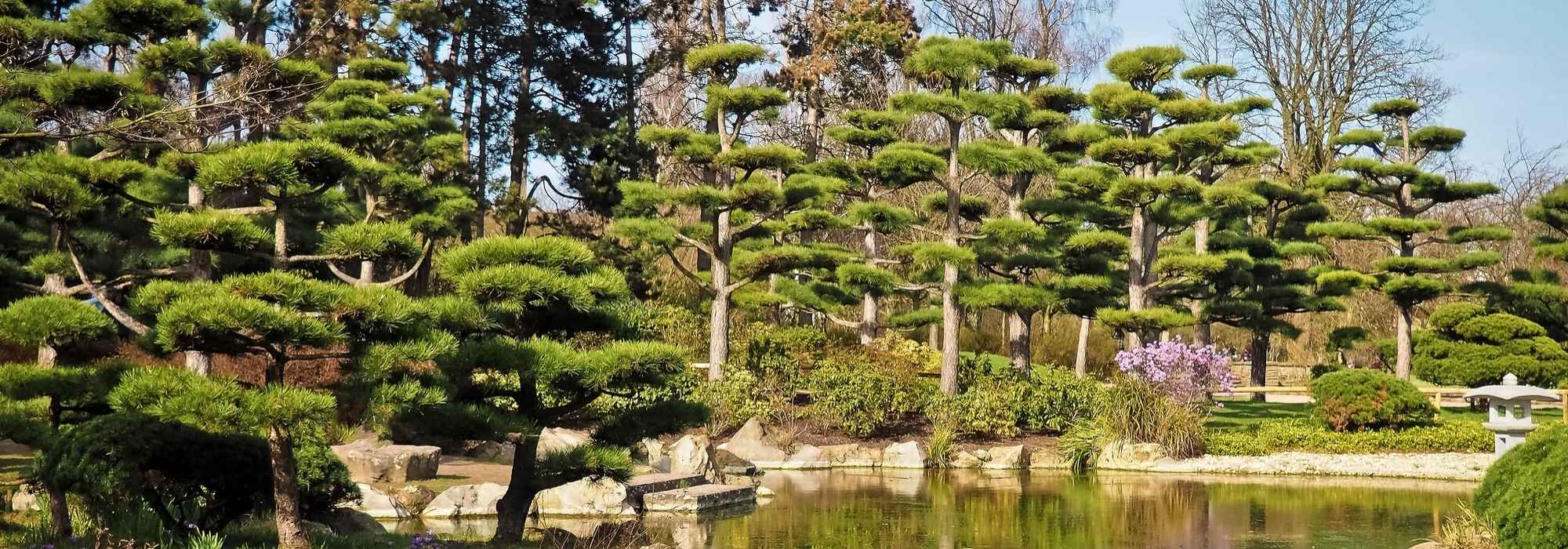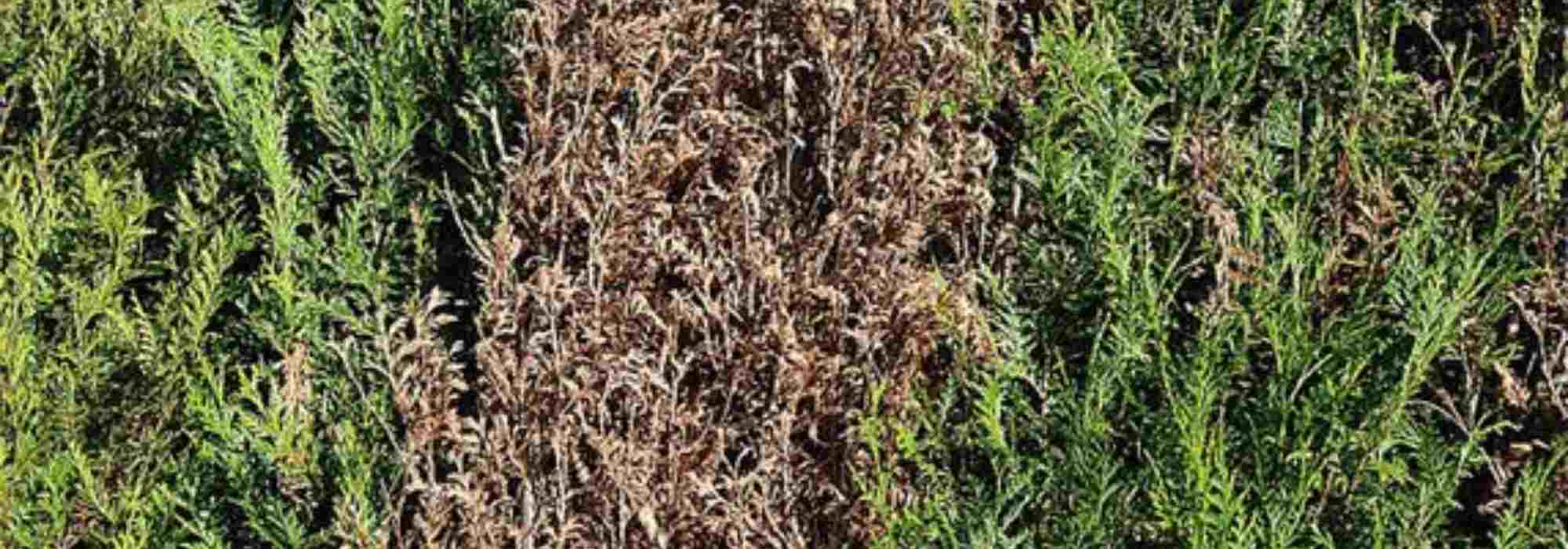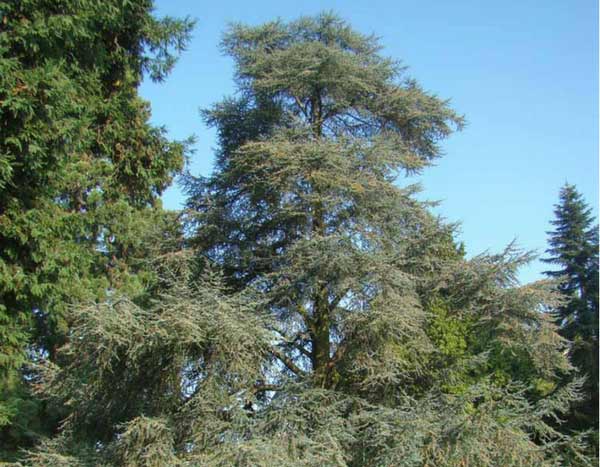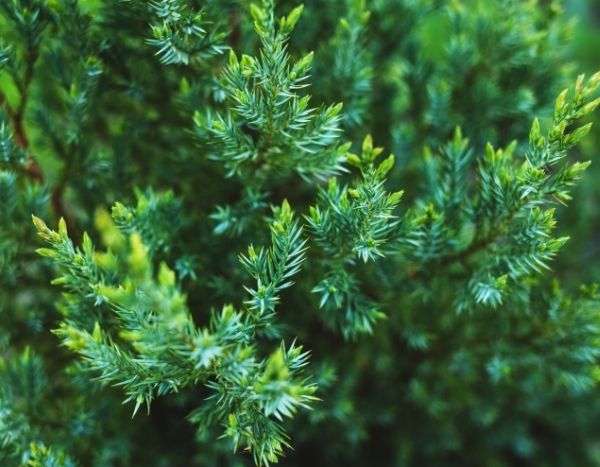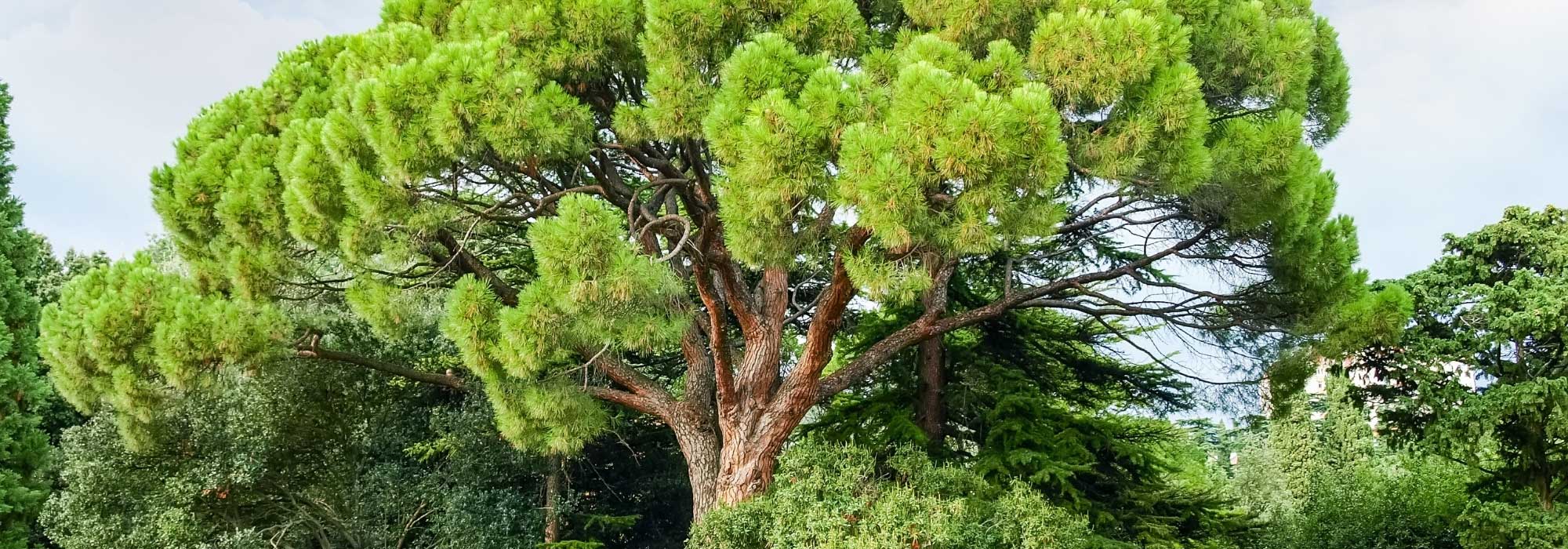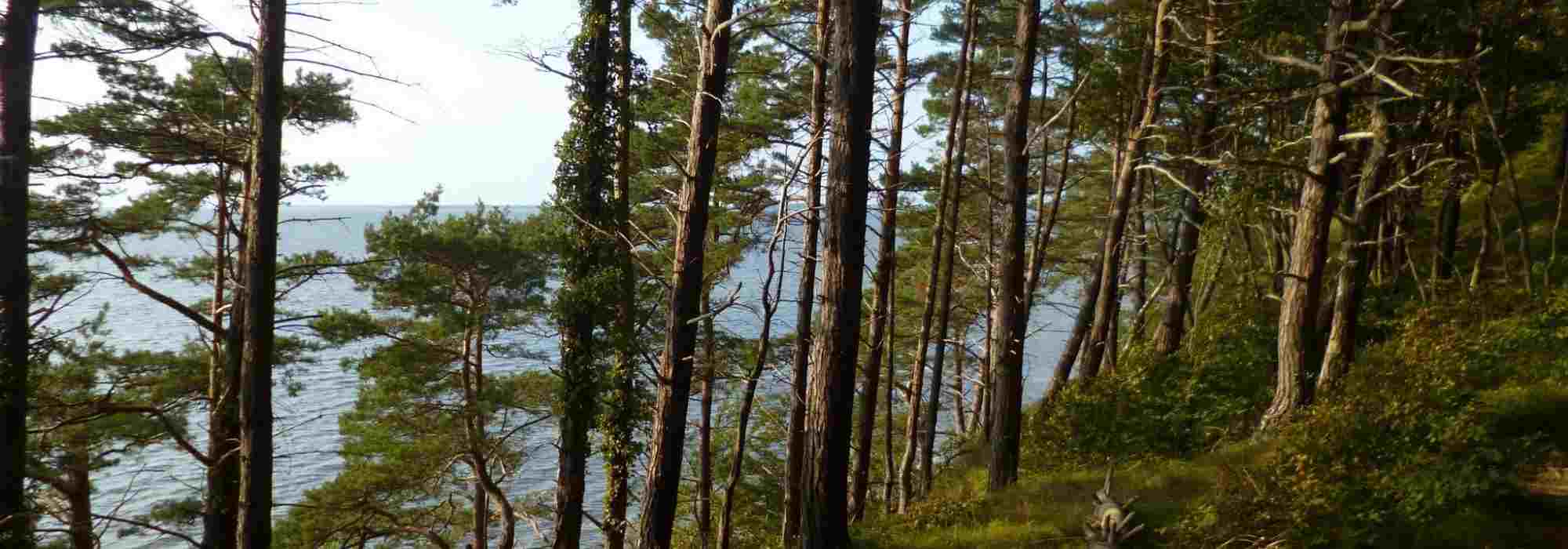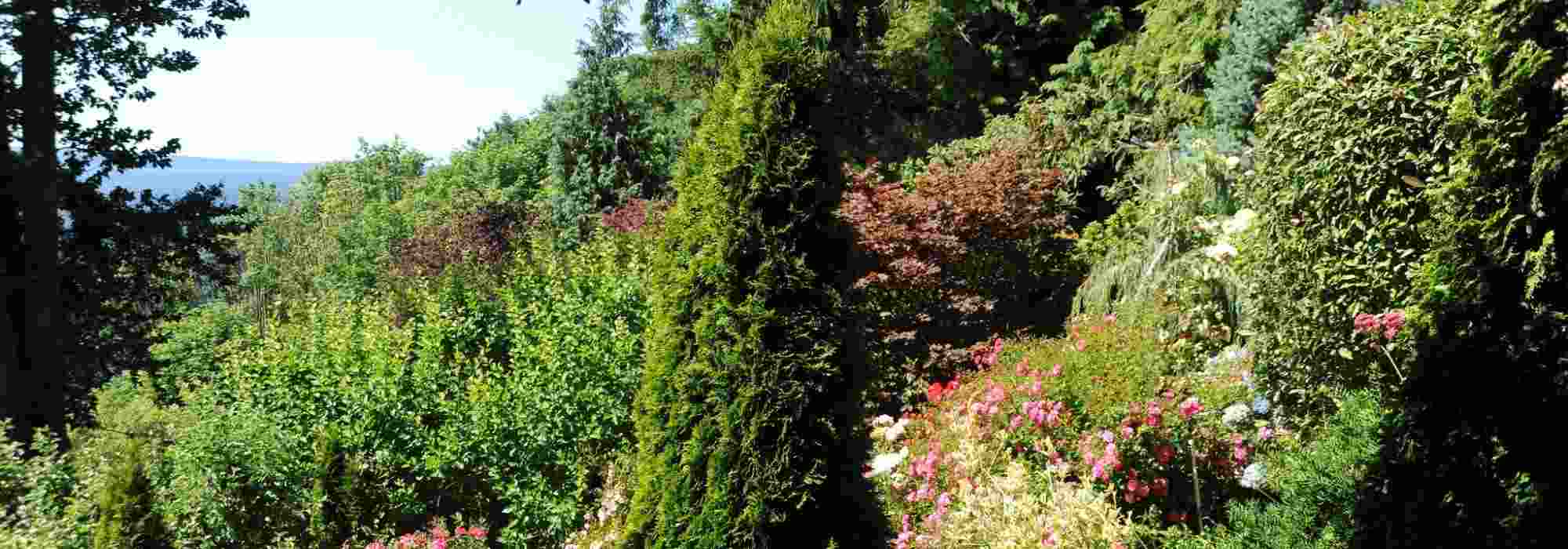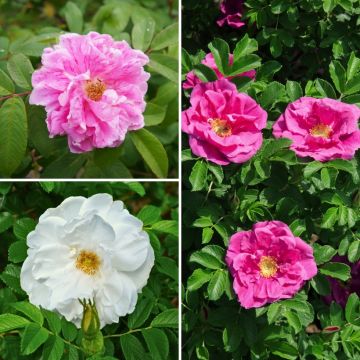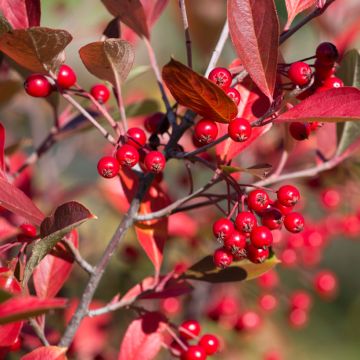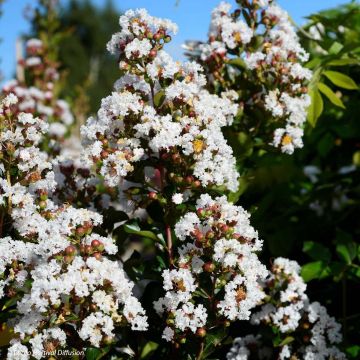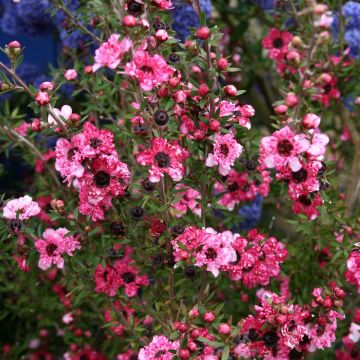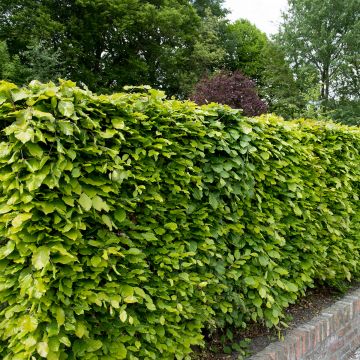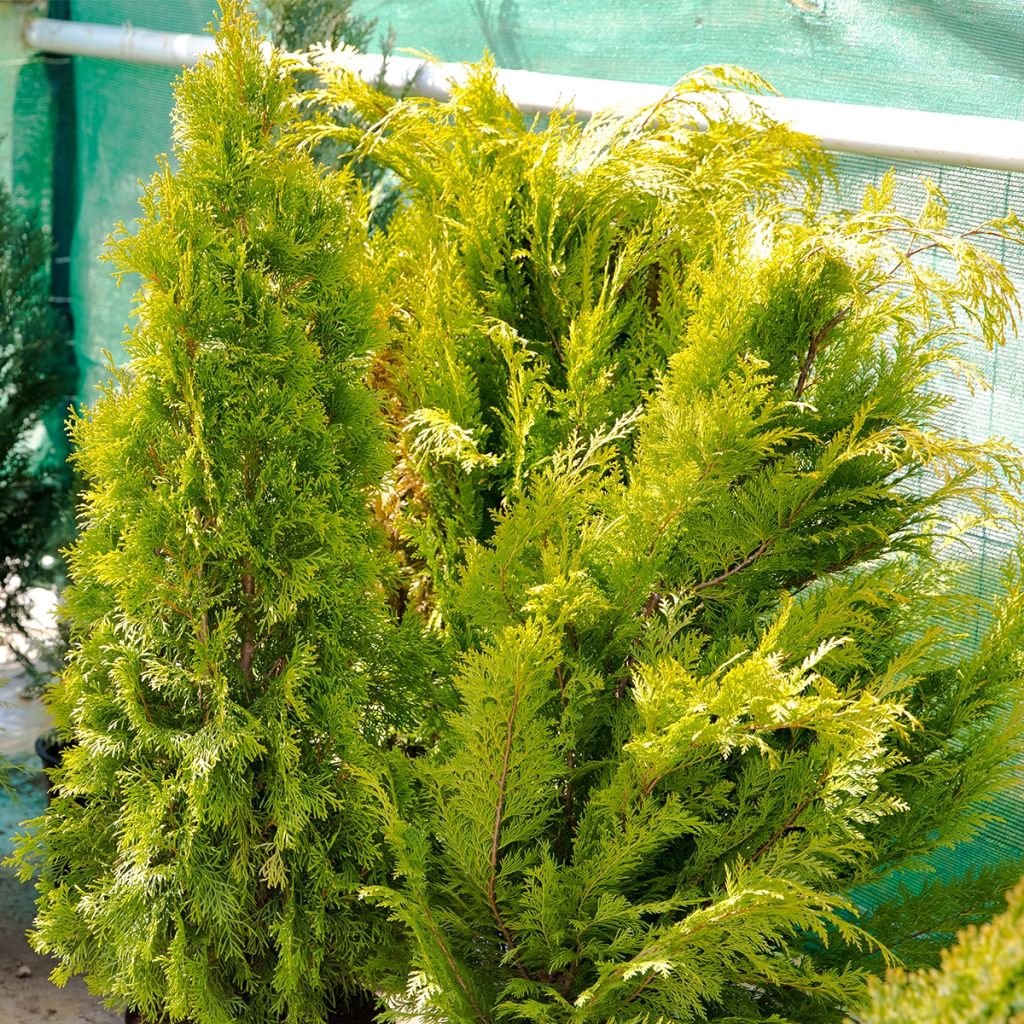

Thuja plicata Martin - Western Red Cedar
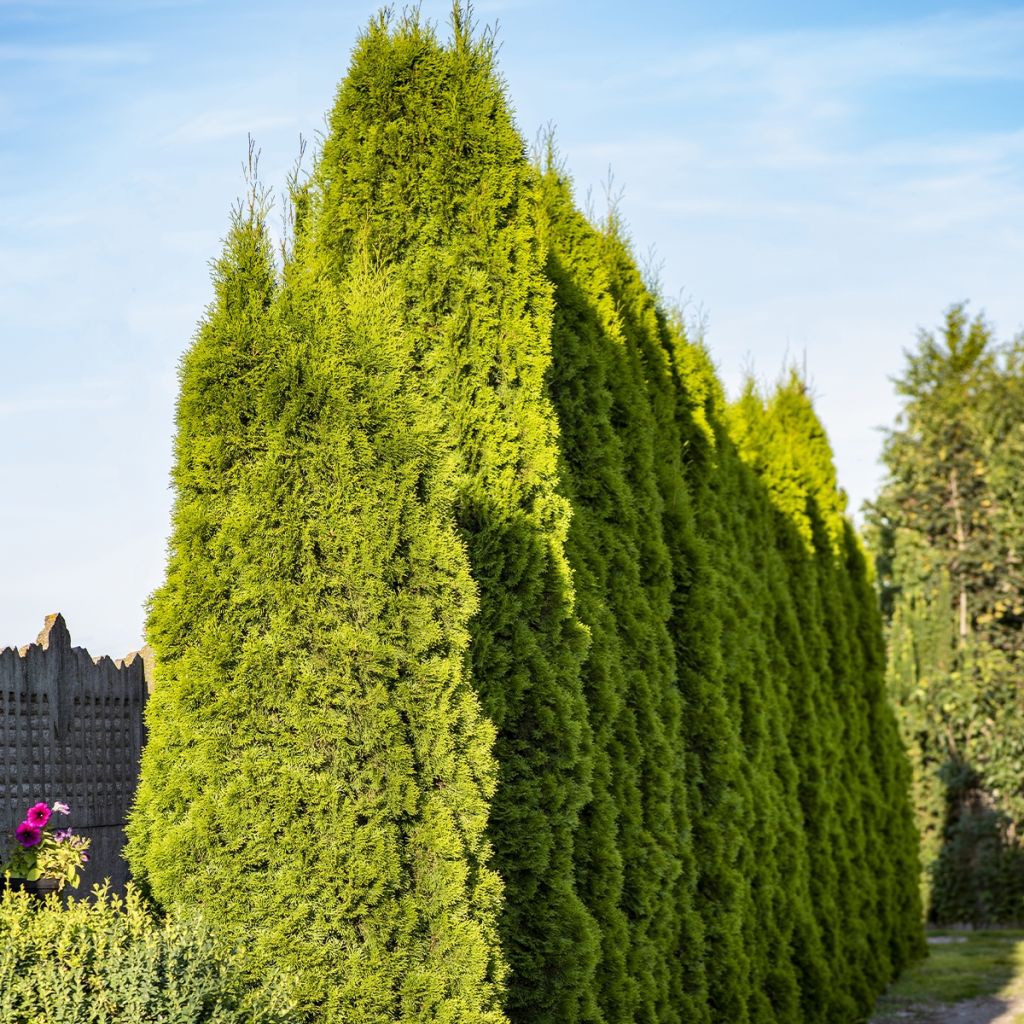

Thuja plicata Martin - Western Red Cedar
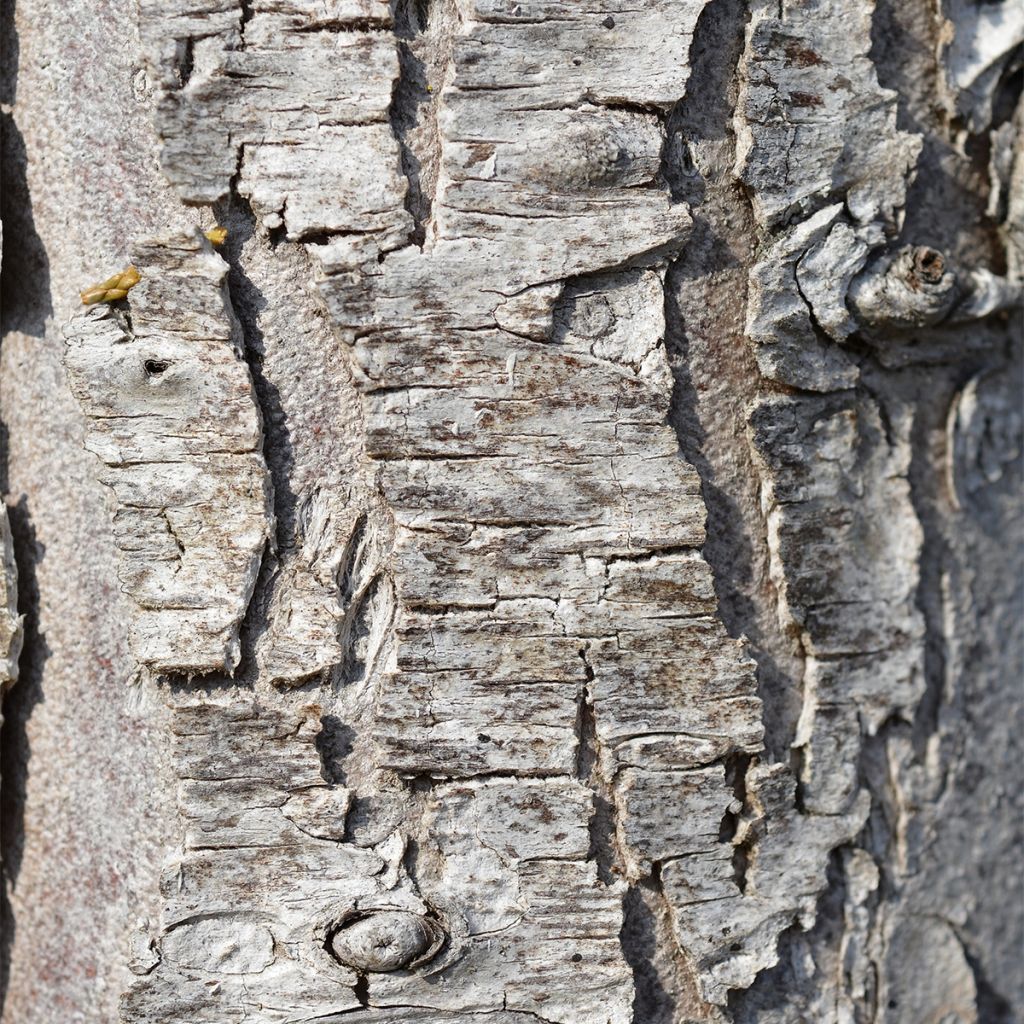

Thuja plicata Martin - Western Red Cedar
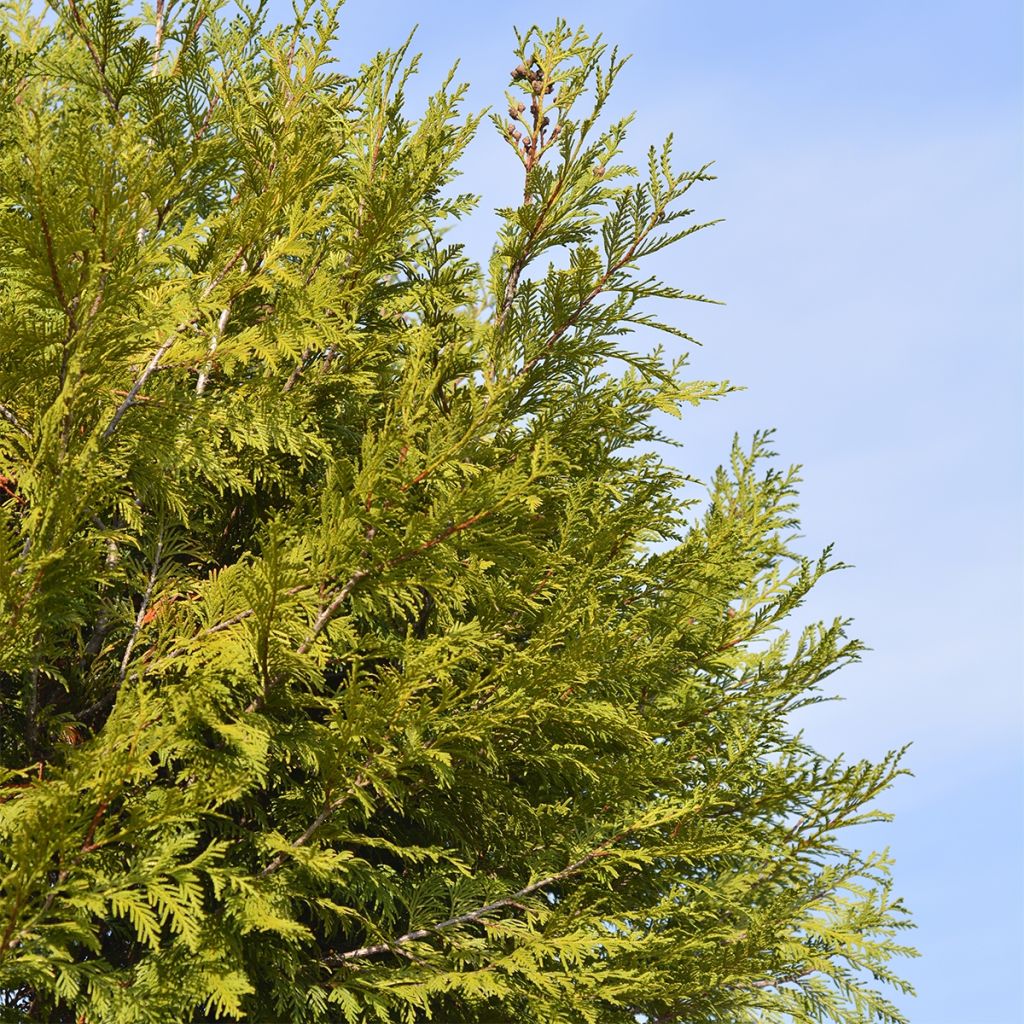

Thuja plicata Martin - Western Red Cedar
Thuja plicata Martin - Western Red Cedar
Thuja plicata Martin
Western Red Cedar, Pacific Red Cedar, Giant Red Cedar
Special offer!
Receive a €20 voucher for any order over €90 (excluding delivery costs, credit notes, and plastic-free options)!
1- Add your favorite plants to your cart.
2- Once you have reached €90, confirm your order (you can even choose the delivery date!).
3- As soon as your order is shipped, you will receive an email containing your voucher code, valid for 3 months (90 days).
Your voucher is unique and can only be used once, for any order with a minimum value of €20, excluding delivery costs.
Can be combined with other current offers, non-divisible and non-refundable.
Why not try an alternative variety in stock?
View all →This plant carries a 24 months recovery warranty
More information
We guarantee the quality of our plants for a full growing cycle, and will replace at our expense any plant that fails to recover under normal climatic and planting conditions.
Does this plant fit my garden?
Set up your Plantfit profile →
Description
The Thuja plicata Martin is a variety of Giant California Arborvitae with rapid and vigorous growth. Perfectly hardy, it withstands repeated pruning well, allowing for the creation of large, dense evergreen screens that are effective against both wind and prying eyes. Its bright green foliage will provide an ideal visual backdrop to highlight plant beds. It thrives in sunny locations and can be easily cultivated in deep, moderately moist soil in summer.
The Thuja plicata, also known as the Giant Arborvitae or Western Red cedar, is sometimes referred to as Lobb's Arborvitae. It is an evergreen conifer in the Cupressaceae family native to the northwest of North America, particularly northern California. In its natural environment, this giant reaches heights of 50 to 60 meters (164 to 197 feet) and can develop a trunk with a diameter of 3 meters (10 feet) when it reaches around 700 years old. It has long been exploited for its soft and durable wood, known in Europe as 'Red cedar'. This giant thrives in the depths of lush forests (California is not just an arid desert!), but it also extends to the banks of rivers or colonizes swampy forests. It is shade-tolerant, even in dense shade, and thrives in humid conditions. Its scale-like foliage is the flattest among its genus.
The 'Martin' variety is a fast-growing selection, with annual growth reaching up to 50 cm (20in). If left unpruned, it can grow up to 15 meters (49 feet) or more in height at maturity, with a spread of approximately 5 meters, which limits its use as a standalone specimen in small gardens. It is more commonly used for hedges, quickly forming a large screen that provides privacy and wind protection. It requires annual pruning once or twice to limit lateral growth and allow for "green pruning" each time. It does not respond well to pruning in old wood, which may permanently damage the hedge. This conifer has flattened branches covered with scale-like leaves that are imbricate in appearance. The aromatic foliage is a bright green color for most of the year, with a slight bronze tinge from autumn to spring.
The 'Martin' Thuja is a proven variety due to its ease of cultivation, high tolerance for pruning, and dense vegetation. However, it prefers a temperate and humid climate. It adapts well to various conditions except for dense shade and dry soils. Its density provides year-round protection for the garden, and the vegetal screen it forms when planted as a hedge enhances any flower bed through contrasting colors, particularly white blooms like those of Mock Orange or Philadelphus, or the Amelanchier such as A. canadensis. In addition to its spring flowering, its vibrant autumn foliage is also enhanced by the Thuja's vegetal screen. The same applies to shrubs with pink blooms, such as the aptly named Deutzia 'Mont Rose', or yellow blooms, such as Buddleia weyeriana 'Sungold', which is less common despite being easy to grow. Light-colored foliage is also enhanced by the background vegetation of the 'Martin' Thuja, such as the robust Hippophae rhamnoides or Sea Buckthorn, with its fine grayish leaves and highly decorative bright orange berries, or the Cotinus coggygria 'Golden Spirit', a Wig Tree with bright golden foliage.
Thuja plicata Martin - Western Red Cedar in pictures
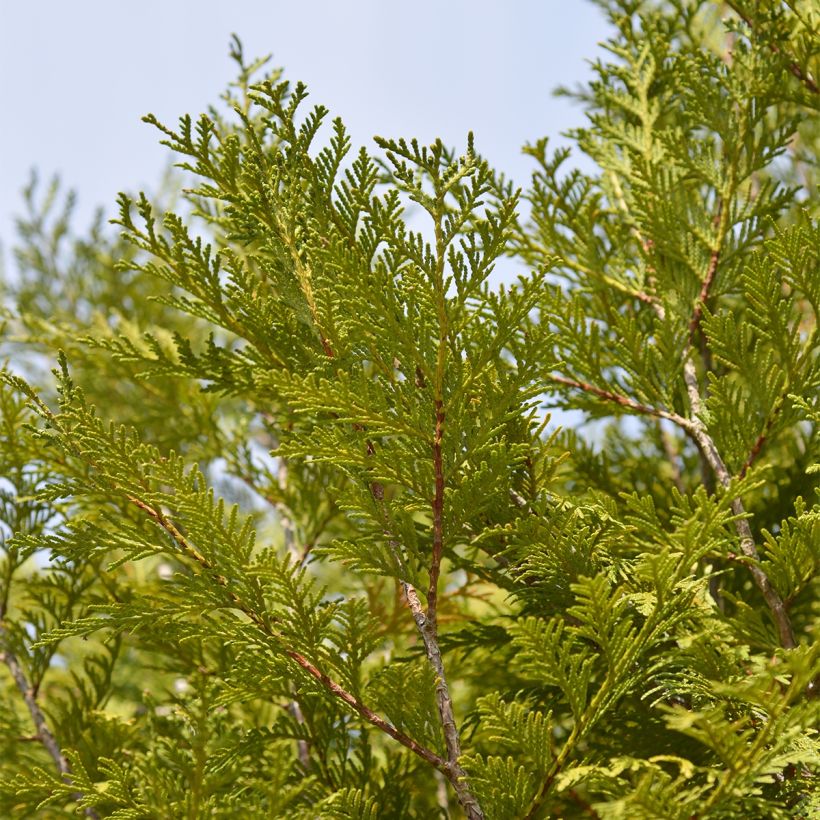

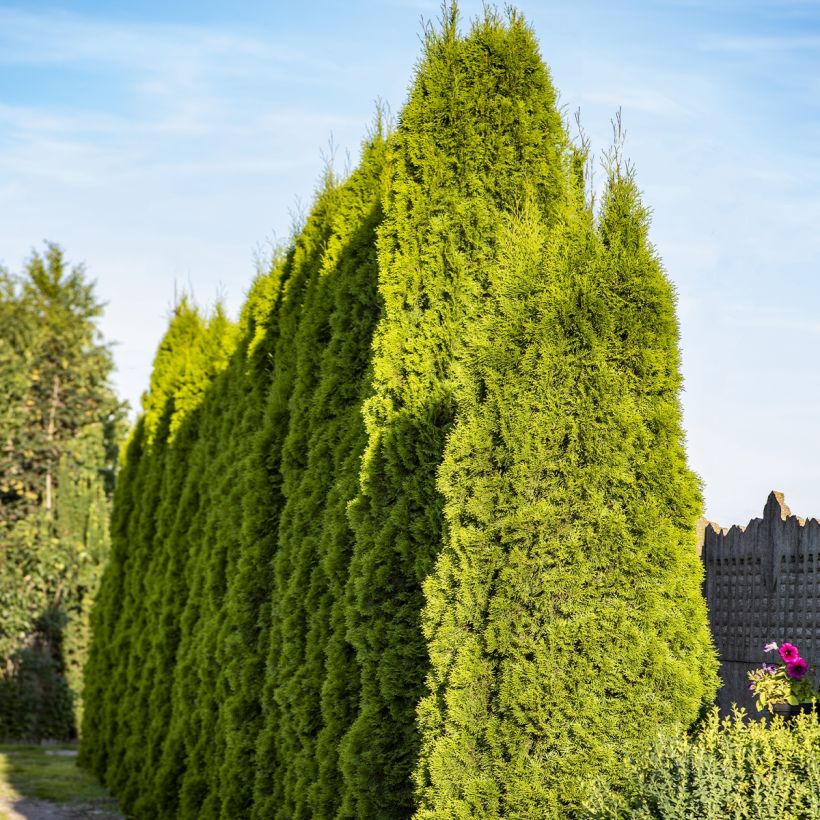

Plant habit
Foliage
Botanical data
Thuja
plicata
Martin
Cupressaceae
Western Red Cedar, Pacific Red Cedar, Giant Red Cedar
Cultivar or hybrid
Other Thuya - Thuja
View all →Planting and care
The Thuja plicata 'Martin' is planted from September to November and from February to April in deep, ordinary, but loose and not too heavy soil. It will tolerate limestone, near neutrality, or even slightly acidic soil, but above all it must retain moisture, as this variety dreads drought. It will thrive in a sunny and open position, although it also tolerates partial shade. Wet the root ball well before planting, or better yet, soak it in a bucket for fifteen minutes to ensure thorough saturation. Optionally, add organic amendment at planting and water generously in the first few years, and during prolonged dry spells. In very poor soil, you can apply a special conifer fertilizer every April and cultivate the soil in summer. This hardy conifer (down to at least -25°C (1°F)) tolerates pruning perfectly, up to twice a year in April and August. It is recommended to prune it annually, cutting only green parts without entering the old wood.
Its main enemies are red spiders and scale insects, which thrive in hot and dry weather. Armillaria or root rot can also develop on the roots. The Thuja plicata can also present cankers on its branches.
Planting period
Intended location
Care
Planting & care advice
This item has not been reviewed yet - be the first to leave a review about it.
Similar products
Haven't found what you were looking for?
Hardiness is the lowest winter temperature a plant can endure without suffering serious damage or even dying. However, hardiness is affected by location (a sheltered area, such as a patio), protection (winter cover) and soil type (hardiness is improved by well-drained soil).

Photo Sharing Terms & Conditions
In order to encourage gardeners to interact and share their experiences, Promesse de fleurs offers various media enabling content to be uploaded onto its Site - in particular via the ‘Photo sharing’ module.
The User agrees to refrain from:
- Posting any content that is illegal, prejudicial, insulting, racist, inciteful to hatred, revisionist, contrary to public decency, that infringes on privacy or on the privacy rights of third parties, in particular the publicity rights of persons and goods, intellectual property rights, or the right to privacy.
- Submitting content on behalf of a third party;
- Impersonate the identity of a third party and/or publish any personal information about a third party;
In general, the User undertakes to refrain from any unethical behaviour.
All Content (in particular text, comments, files, images, photos, videos, creative works, etc.), which may be subject to property or intellectual property rights, image or other private rights, shall remain the property of the User, subject to the limited rights granted by the terms of the licence granted by Promesse de fleurs as stated below. Users are at liberty to publish or not to publish such Content on the Site, notably via the ‘Photo Sharing’ facility, and accept that this Content shall be made public and freely accessible, notably on the Internet.
Users further acknowledge, undertake to have ,and guarantee that they hold all necessary rights and permissions to publish such material on the Site, in particular with regard to the legislation in force pertaining to any privacy, property, intellectual property, image, or contractual rights, or rights of any other nature. By publishing such Content on the Site, Users acknowledge accepting full liability as publishers of the Content within the meaning of the law, and grant Promesse de fleurs, free of charge, an inclusive, worldwide licence for the said Content for the entire duration of its publication, including all reproduction, representation, up/downloading, displaying, performing, transmission, and storage rights.
Users also grant permission for their name to be linked to the Content and accept that this link may not always be made available.
By engaging in posting material, Users consent to their Content becoming automatically accessible on the Internet, in particular on other sites and/or blogs and/or web pages of the Promesse de fleurs site, including in particular social pages and the Promesse de fleurs catalogue.
Users may secure the removal of entrusted content free of charge by issuing a simple request via our contact form.
The flowering period indicated on our website applies to countries and regions located in USDA zone 8 (France, the United Kingdom, Ireland, the Netherlands, etc.)
It will vary according to where you live:
- In zones 9 to 10 (Italy, Spain, Greece, etc.), flowering will occur about 2 to 4 weeks earlier.
- In zones 6 to 7 (Germany, Poland, Slovenia, and lower mountainous regions), flowering will be delayed by 2 to 3 weeks.
- In zone 5 (Central Europe, Scandinavia), blooming will be delayed by 3 to 5 weeks.
In temperate climates, pruning of spring-flowering shrubs (forsythia, spireas, etc.) should be done just after flowering.
Pruning of summer-flowering shrubs (Indian Lilac, Perovskia, etc.) can be done in winter or spring.
In cold regions as well as with frost-sensitive plants, avoid pruning too early when severe frosts may still occur.
The planting period indicated on our website applies to countries and regions located in USDA zone 8 (France, United Kingdom, Ireland, Netherlands).
It will vary according to where you live:
- In Mediterranean zones (Marseille, Madrid, Milan, etc.), autumn and winter are the best planting periods.
- In continental zones (Strasbourg, Munich, Vienna, etc.), delay planting by 2 to 3 weeks in spring and bring it forward by 2 to 4 weeks in autumn.
- In mountainous regions (the Alps, Pyrenees, Carpathians, etc.), it is best to plant in late spring (May-June) or late summer (August-September).
The harvesting period indicated on our website applies to countries and regions in USDA zone 8 (France, England, Ireland, the Netherlands).
In colder areas (Scandinavia, Poland, Austria...) fruit and vegetable harvests are likely to be delayed by 3-4 weeks.
In warmer areas (Italy, Spain, Greece, etc.), harvesting will probably take place earlier, depending on weather conditions.
The sowing periods indicated on our website apply to countries and regions within USDA Zone 8 (France, UK, Ireland, Netherlands).
In colder areas (Scandinavia, Poland, Austria...), delay any outdoor sowing by 3-4 weeks, or sow under glass.
In warmer climes (Italy, Spain, Greece, etc.), bring outdoor sowing forward by a few weeks.






























